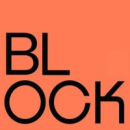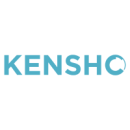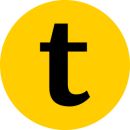A good product discovery process doesn’t guarantee a good product, but it is a critical step to creating a good product. Establishing a good discovery process takes time, as does actually carrying it out, and time spent discovering problems and hypothesizing solutions is time not spent building products.
That said, there is a way to make product discovery more efficient without watering the “discovery” aspect down.
One approach is to double down on the process itself. For example, the product team at Justworks has created extensive discovery documentation to which both rookies and experienced practitioners can look for guidance. The team also follows a set weekly schedule that keeps product managers from falling down rabbit holes during discovery.
Other teams ensure a constant flow of communication: Tapestry has a “voice of customer” team that helps increase efficiency during discovery by keeping a constant stream of customer feedback flowing to the product team. At Kensho, PMs reduce the chances for miscommunication or a lack of alignment by ensuring every team involved in creating or supporting a product is also involved in brainstorming and discovery.
Another key to efficient and effective discovery is clarity of purpose. “Having a clear idea of the fundamental question we’re asking has been key to letting us practice continuous discovery,” said Chanelle Mather-Shapiro, senior product manager of growth, at Block Renovation. “Without a sustained focus on these more fundamental questions, it’d be easy to focus on problems or solutions that might not drive the kind of impact we want or lead to a conceptual dead end.”
Whether you’re looking for best practices to adopt for your own team or for a new product role — all four of these companies are hiring — read on to learn how these businesses approach product discovery.
Homeowners, contractors and interior designers use Block Renovation’s platform to collaborate on bathroom and kitchen redesigns. When it comes to product discovery, Mather-Shapiro said what makes Block unique is its willingness to adapt its strategies based on the available expertise at hand.
That gave Mather-Shapiro the chance to integrate practices from her former career as a behavioral economist and analyst into Block’s discovery process.
What makes your team’s product discovery process unique from other teams you’ve been a part of?
I’ve worked in really large organizations with fairly rigid hierarchies and smaller organizations where everyone wore every hat. Block occupies a really nice middle ground. Our team has subject matter experts and established processes that give us structure, but we’re constantly adding to our methodological toolkit and adapting our approach to the situation at hand.
My background is in behavioral sciences, and when I came to Block I was able to seamlessly integrate that perspective into our discovery process. The team was really open to thinking about existing challenges through a new conceptual lens, integrating phenomena like present bias into models for understanding our products and the user’s relationship to them.
I created an experimentation strategy and playbook to introduce the team to the fundamentals of this approach, and people were able to get involved in everything from the ideation phase of experiments to execution, analysis and iteration. The key to this flexibility is the tacit understanding that no one methodology dominates. Rather, we want to cultivate a robust toolkit.
I created an experimentation strategy and playbook . . . The key to this flexibility is the tacit understanding that no one methodology dominates.”
Do you collaborate with other teams or stakeholders throughout the discovery process? How do product managers nurture these relationships (while maintaining alignment)?
While our future planning process is a huge collaboration between PMs, product designers and engineers, we’re constantly working with a range of experts and teams outside of product given the complex nature of renovations and our business. This means we’re often partnering with our architectural designers, the contractor team and our planners. We’re hoping to create the best experience possible for homeowners and contractors, and these teams are critical to that since they’re often directly interacting with these parties.
For that reason, we work really hard to ensure they have all the tools they need to succeed. Listening to internal teams, getting their feedback and support and integrating that with our own learnings has been instrumental to not only the products we build but also the way we think about how these products integrate into the larger Block experience. It feels like a true partnership and reflects our collaborative culture.
What does continuous discovery look like for your team? What has made your team successful in maintaining this practice?
Having a clear idea of the fundamental question we’re asking has been key to letting us practice continuous discovery. Having a holistic overview of the core, ambiguous problem area gives me a lot of different entry points to the problem and lets us evolve our line of discovery based on changing user responses, business needs, etc. I think of it like a tree, where we start with a core question and each subsequent question becomes a branch. Over time some branches become larger or heavier than others and we adapt our approach to respond to these changes.
Without a sustained focus on these more fundamental questions, it’d be easy to focus on problems or solutions that might not drive the kind of impact we want or lead to a conceptual dead end. Instead, having this higher-order question gives us a North Star that we can always be working toward while also giving us a way to prioritize more granular research strands based on how effectively they answer our root question.
Justworks’ cloud-based software is used by companies to manage payroll, benefits and a myriad of other HR functions. A platform like Justworks is designed to be sticky and serve as a critical tool for multiple teams across an organization. Given this, it’s critical that the team is continuously delivering updates and features to its various solutions so as to maintain their stickiness.
To keep the team on track, Ryan Gilman, senior product manager, said he defines specific goals each week that keep the team focused on a particular aspect of the discovery process.
What makes your team’s product discovery process unique from other teams you’ve been a part of?
Justworks spends a decent amount of time documenting and refining best practices, so there are numerous resources available for both neophytes and experienced practitioners. You are never alone during discovery and always work with a team of designers, engineers and marketing managers who all provide a different perspective that creates a single voice. The team helps shape the hypothesis and broad interview structure and, depending on the topic, may also provide additional context via business intelligence or marketing data.
How does this actually work? Let’s imagine we are starting research on a new product, and instead of starting from scratch, the team has specific hypotheses. We use the discovery process to validate our theories. Discovery can take many forms, but let’s use interviews as an example: Oftentimes we start our discovery process by identifying target users and interviewing them. At the end, we compile the key takeaways that confirm or deny our suspicions. Once we have summarized that, we can then begin looping in other stakeholders and create solutions and designs.
Do you collaborate with other teams or stakeholders throughout the discovery process? How do product managers nurture these relationships (while maintaining alignment)?
Beyond the core group — engineering, product marketing and design — involvement is project dependent but generally focuses on dependencies, knowledge sources and customer touchpoints. One key for nurturing these relationships is to transform them into partnerships. If we set up a meeting to simply inform the support team of updates, they won’t be empowered to guide us on changes that could help educate customers and reduce demand on support.
On the other hand, if we reach out to them and share what we’re thinking and why we’re considering an approach, suddenly the conversation changes and the support team feels empowered to contribute. This is an investment of time and effort and it may not be right for all projects but it leads to a better experience for customers.
The best way to illustrate this is taking the prior example, our initial findings, and going a step further. Let’s assume our findings also involve external teams, account management, customer support and more. We would loop them into the process via a roadshow to kick the conversation off.
If we simply inform the support team of updates, they won’t be empowered to guide us on changes that could help educate customers and reduce demand on support.”
What does continuous discovery look like for your team? What has made your team successful in maintaining it?
As a team, we’re clear on what outcome we want to enable for our customers. That’s our goal, and from that we create key metrics that signal if and how we’re succeeding. With that vision and data, continuous discovery becomes much easier.
For example, each week for discovery we define what we need to learn to get closer to delivering the outcome. What assumptions are we testing? What prototype can we get feedback on? What problems should we brainstorm solutions for? This keeps us focused and makes sure our learnings are aligned with reaching a specific outcome.
Discovery for us doesn’t end once a product is developed. We first launch features to a small beta group to test our ideas. Customers get features earlier, and in exchange we get quality feedback from real-world use. We also assume we could be wrong, or that there’s a much better way to do something, and the feedback we hear from customers goes directly into our discovery process to feed our next iteration. Finally, our internal stakeholder relationships are also a source of continuous feedback.
Kensho is a part of S&P global and leverages its parent company’s data to develop AI and machine learning-powered products like Scribe. According to Kensho, Scribe is specifically optimized for real-world business and finance audio recordings and can transcribe two minutes of audio in less than a second.
Katie Kuzin is the product lead for Scribe and shared how being part of a larger company helps streamline the discovery process.
What makes your team’s product discovery process unique from other teams you’ve been a part of?
As a company of S&P Global, Kensho makes AI tooling for S&P and also externalizes AI research and software to non-S&P clients. Because of our close relationship with S&P, we have a built-in set of users we can learn from who act as an engaged first customer. This makes our iteration cycle shorter and speeds up our product discovery process. It’s unique for an AI lab to have as engaged of a first and best customer as Kensho has with S&P.
Based on what we learn from these relationships, I’m interested in building AI that feels understandable and explainable. So we’re bringing design into our end-to-end user experience process, making an easy-to-use, developer user experience through both our APIs and GUI.
Do you collaborate with other teams or stakeholders throughout the discovery process? How do product managers nurture these relationships (while maintaining alignment)?
In the discovery process, we work directly with the data, design and sales teams as well as our full stack of engineering and our machine learning research team. It’s helpful to have each team that supports and creates the product in the room together during brainstorming and discovery sessions. The relationship between each team member and each division of Scribe is what holds the product together.
Product’s role is to provide a North Star and vision along with an idea of the competitive landscape, but it’s up to team leads to decide how they can best support Scribe moving forward. To nurture these relationships, I try to maintain and promote team autonomy and take immediate action on feedback regarding what teams can and can’t do or around changing timelines.
To create a high-trust environment, you have to assume everyone is trying their best to achieve your common goals. I shy away from being the sole director of a team’s goals and from pushing for a project to be completed early without showing the willingness myself to work the extra hours to get it done.
It’s helpful to have each team that supports and creates the product in the room together during brainstorming and discovery sessions.”
What does continuous discovery look like for your team? What has made your team successful in maintaining this practice?
We listen to our customers. One ongoing practice is to sit in on sales conversations with potential and existing customers to learn how they use or see themselves using Kensho’s products. In addition, I like seeing what non-AI tools do to make their platforms easy to use. I’m a fan of Stripe, Figma and Lyft and pay close attention to their UX features when using each company’s product or service. That inspires improvements to Scribe AI as well.
Tapestry is the parent company of luxury brands Coach and Kate Spade. Although the brands share similarities they all appeal to different consumers, which means Ashley Torcivia, director of digital product, and her team have triple the work to do during some portions of the discovery phase. Here’s how they handle that challenge.
What makes your team’s product discovery process unique from other teams you’ve been a part of?
Our product discovery starts with our customers. We’re in the unique position of solving similar problems for different customers and creating solutions that scale at the platform level but leave room for the individual brands to tell their stories. It’s both fun and challenging to interpret customer problems and envision them for three different brand personalities.
Here is our product discovery process at a high level: First, our user research team leads a customer connections program where product managers and brand leaders talk to customers to understand their pain points and needs. Our dedicated voice of customer team streams customer feedback to the product team, which then synthesizes the ideas and creates a set of hypotheses to solve identified pain points or build new experiences. Next, we validate the hypothesis and run experiments to understand if the product idea is valuable or feasible.
It’s both fun and challenging to interpret customer problems and envision them for three different brand personalities.”
Do you collaborate with other teams or stakeholders throughout the discovery process? How do product managers nurture these relationships (while maintaining alignment)?
Cross-team and cross-brand collaboration is one of our strongest assets. The product management team works closely across the organization with key partnerships in the digital and store brand teams, design and engineering. Our relationships are based on a foundation of trust and a shared vision: creating an inspirational, engaging and intuitive shopping experience that evokes our customers’ brand desire. We build our relationships based on personal connection, bonding over family, pets and hobbies.
Our rituals include constant communication, feedback and flexibility. We co-create and evangelize our quarterly digital and product strategy with our brands and engineering teams, meeting biweekly to create hypotheses, prioritize and make data-driven trade-off decisions. We nurture these relationships by having empathy with each team’s individual goals, which all support our shared vision and deep customer focus. When the teams trust that we have their best interest in mind, there’s a culture of mutual understanding that supports knowing when to push and when to be flexible to maintain alignment.












